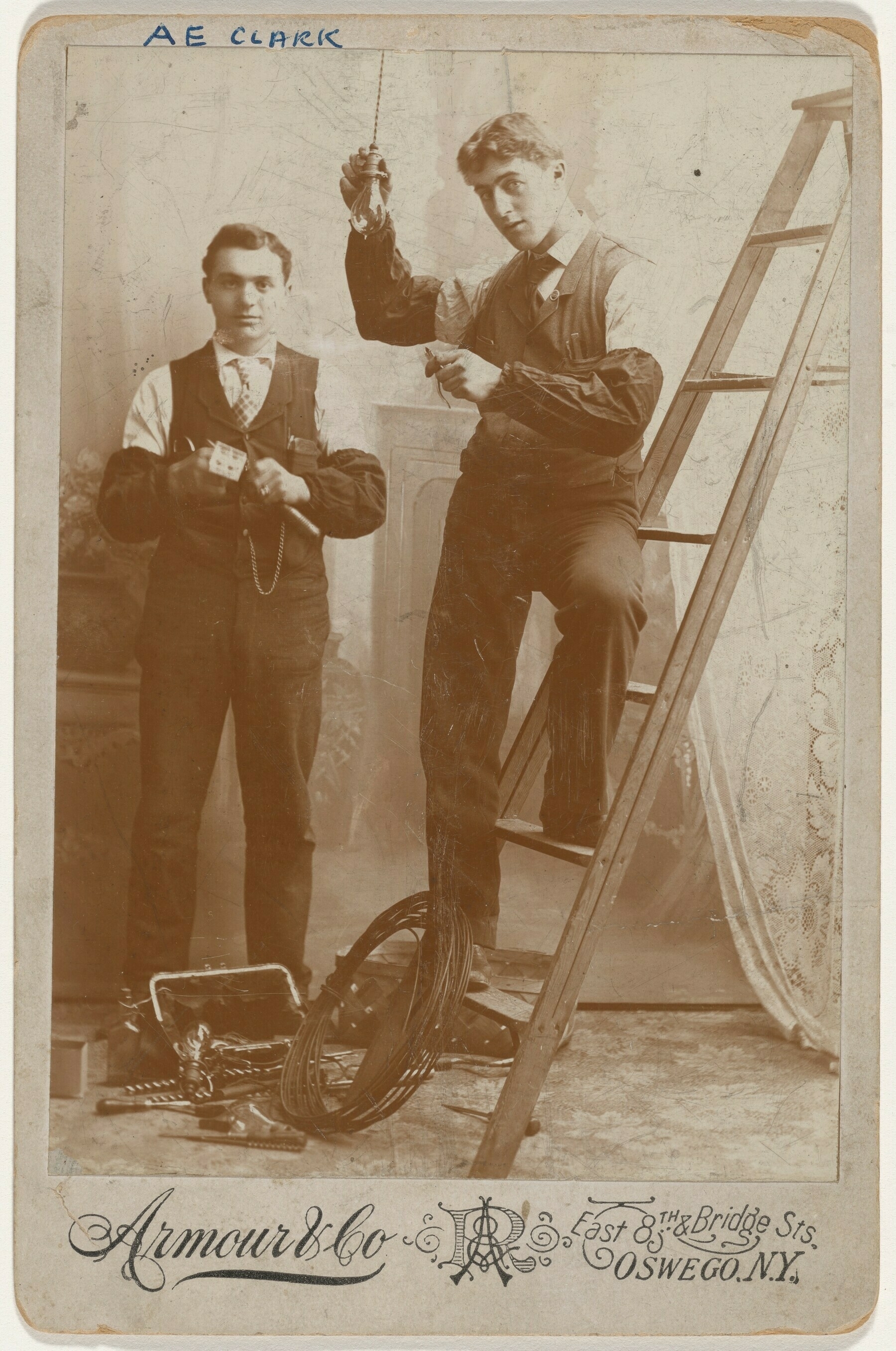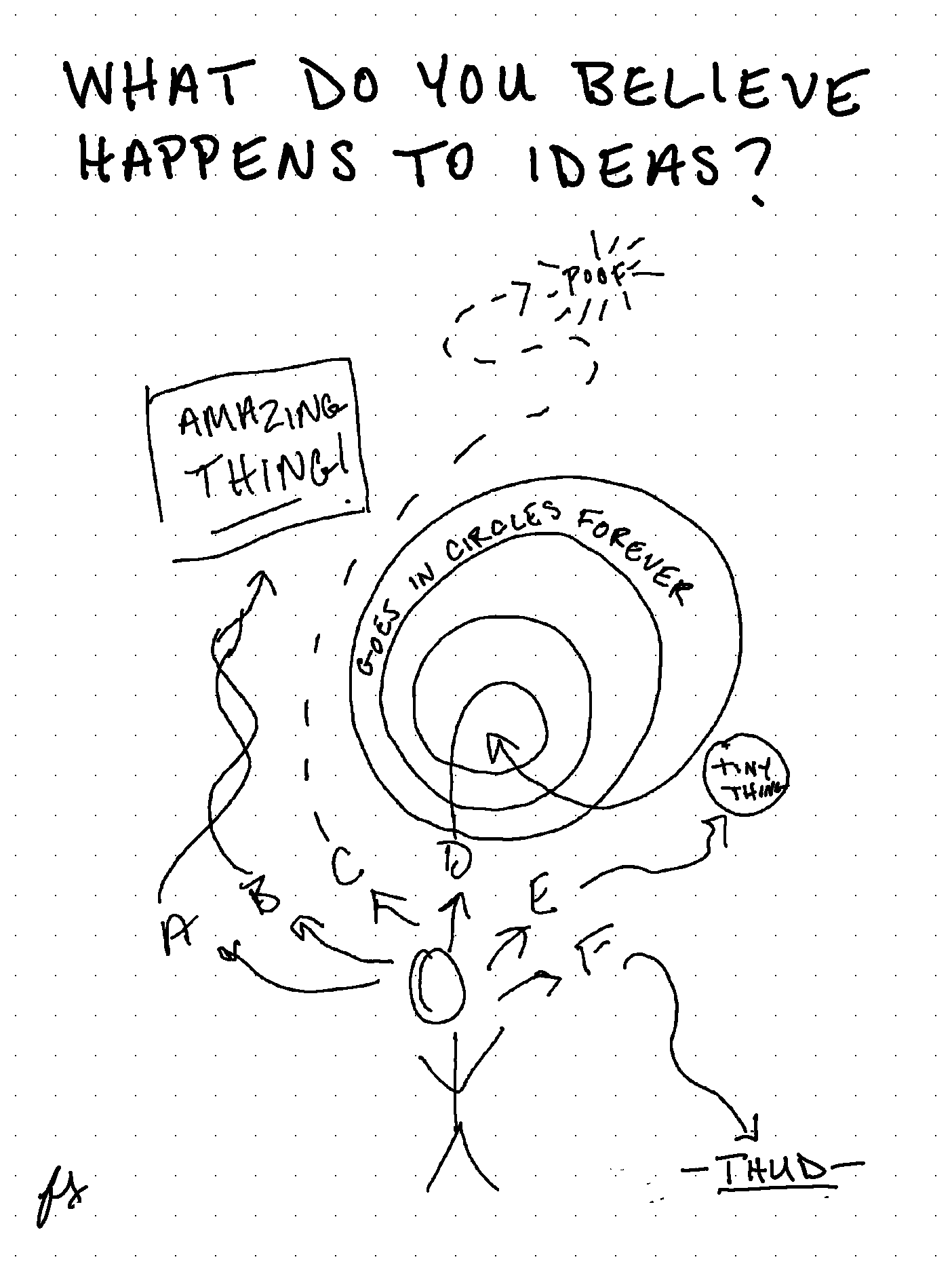As nation states rise, fall, and change shape, who decides whether and when to retire a country’s domain? When a domain is deleted, what happens to all of the websites and mailing lists under it, and all of the knowledge they contain?
“It’s scary to think that you could buy a piece of medical equipment for your hospital, just to have the manufacturer wake up one day and decide they will monopolize all repairs for that product,” Nathan Proctor, senior director of consumer rights group PIRG’s campaign for the right to repair, told 404 Media. “The people who are trained to fix that equipment won’t suddenly forget all they know, but they will suddenly be restricted from doing the repairs. I think that’s just absurd.”
via 404 Media
Gall’s Law:
A complex system that works is invariably found to have evolved from a simple system that worked. A complex system designed from scratch never works and cannot be patched up to make it work. You have to start over with a working simple system.
via Jorge Arango
From Jesse Alford at Nonlinear Garden:
Slice smaller, finish, reorient. Feed your intention with victory. Let the parts of you that are afraid you will never progress see that it is not true.
I loved the way this whole piece made a parallel with Several Short Sentences About Writing.
More from Disability Dongle:
But their shift from ‘designing for’ to ‘designing with’ constrains the disabled user as a rhetorical device to validate the hypothetical one. As Deleuze notes, virtual images engage in an exchange with their actual referents; the virtual self-actualizes by “engulf[ing the actual] and leav[ing it] as just a virtuality” (2002, pg. 150). Within the Disability Dongle cycle, the designer selects actual disabled people to draw into a pre-imagined use case. The designer determines what questions to ask and which insights are relevant. In presenting those relevant insights, the Disability Dongle validates itself.
Disability Dongles
From Disability Dongle:
In plain terms, the design process of creating a Disability Dongle isn’t actually about producing an assistive device, shitty or not, it’s about producing an idea of what disability is. It’s not a failure that they don’t create a useful assistive device because that’s not what Disability Dongles are actually about. The technology, media, and cultural artifacts that reproduce disability as pitiable and technology as savior are the entire point.
We need to talk about this concept in the context of trans health equity work, which also produces an idea of what transness is, with cis experts as saviors.
The whole article is an important read.
Fascinating article on the sparkles icon, which has proliferated as an indicator for AI.
DNF’d Playing to Win by Alan G. Lafley at 16% because the first chapter was so repetitive that I lost all faith in the author.
From Alice Sparkly Kat:
We don’t use astrology to manufacture doom. We use astrology, which is a divination tool, to help us narrate the futures we are building. The future isn’t something that happens to us. It’s what we build together. That is what we use astrology to narrate—a determined vision of the future that supports our inventiveness.
Revisiting Promotional Principles for Creative People, a collaborative project from Metalabel.
Lots of interesting additions in the comments, including this quote from William Zinsser:
Believe in your own identity and your own opinions. Writing is an act of ego, and you might as well admit it. Use its energy to keep yourself going.
Energy audits
Mandy Brown’s post Energy Makes Time was what I needed to read today, and I’ve decided to do another energy audit.
A website makes it real
From the Squarespace landing page:

“A website makes it real.”
This is the thing, though. How did it happen that now you need an impeccably designed (possibly overdesigned) website in order to feel like your small business, creative work, side hustle, or whatever other thing is “real”?
Because it’s not just “a website.” No one is saying that tossing up an unformatted glob of text makes it real, even though that is technically a website.
Much as in the same way that other supposedly labor saving devices just created more labor, it feels as though website services like Wix and Squarespace appear to make it easier to create a website, but perhaps have made it harder by upping the design expectations of websites for even the tiniest microbusiness.
I decided to code my own website and here's what happened (Part 1 of many)
Do you remember how the internet used to be?
A time when unvisited hyperlinks were always blue with an underline, and visited hyperlinks were purple with an underline.
When you could just write some HTML and there you had a website and maybe people visited it and maybe they didn’t because search engines weren’t particularly good. Maybe you had a site visitor counter at the bottom of the site and checked on whether it rolled up each time you refreshed the page.
The internet is still built on HTML and CSS, but it no longer feels that way to the average person. How do they make those animations? How does the font size adjust to your phone? Do you think about these things?
I do.
I got tired of feeling like I didn’t get how it all worked. I spend so much of my time online, after all.
And I got tired of paying so much money to Squarespace every month just to have a basic personal website and occasionally sell a book.
But it wasn’t really about the money. It was about the way my Squarespace site made me feel. It never felt quite right. It always felt like I was fitting my stuff into someone else’s container and feeling awkward about it. The big image sections didn’t look good with my pictures. The text sections were never the right size for my text.
And most of all, it made me feel like I had to think in a certain format. Three boxes across the layout? Hope I have three things to fit into them.
I was just done.
How hard could it be to make my own thing?
(to be continued)
Maybe I’ll start to adhere to a one-in, one-out policy when it comes to my inbox. For each newsletter I subscribe to, I need to unsubscribe to a different one.
Public domain image of the day. Armour & Co. Portrait of Electric Light Installers, c. 1904. National Gallery of Art.

“Bad programmers worry about the code. Good programmers worry about data structures and their relationships.” - Linus Torvalds
"Illegibility comes from complexity without clarity."
This past summer, I gave a lecture at a web conference and afterward got into a fascinating conversation with a young digital design student. It was fun to compare where we were in our careers. I had fifteen years of experience designing for web clients, she had one year, and yet some how, we were in the same situation: we enjoyed the work, but were utterly confused and overwhelmed by the rapidly increasing complexity of it all. What the hell happened? (That’s a rhetorical question, of course.)
From Everything Easy is Hard Again, an important perspective on web design by Frank Chimera.
Spent some time in the Gapingvoid Culture Design Group archives. I liked these in particular.
Simplicity is Complexity Resolved - Gapingvoid
